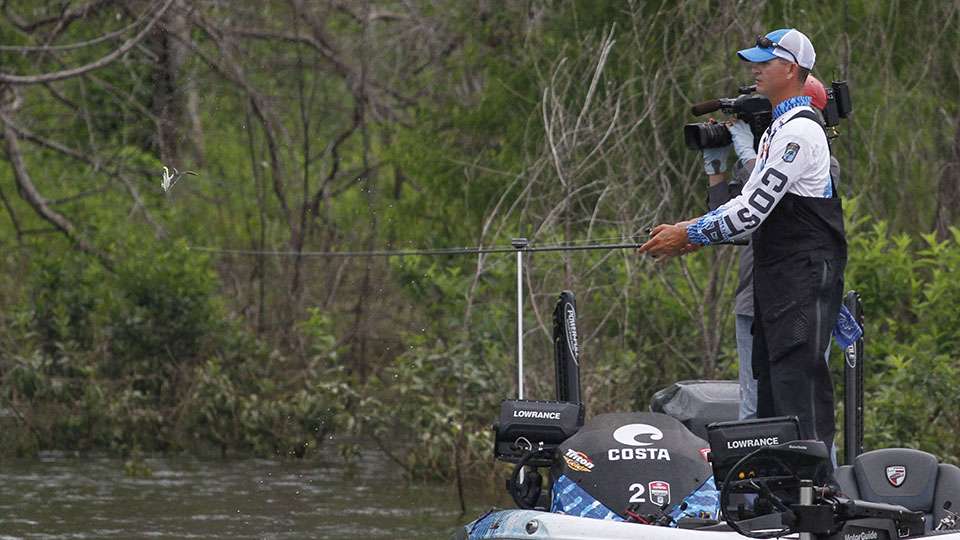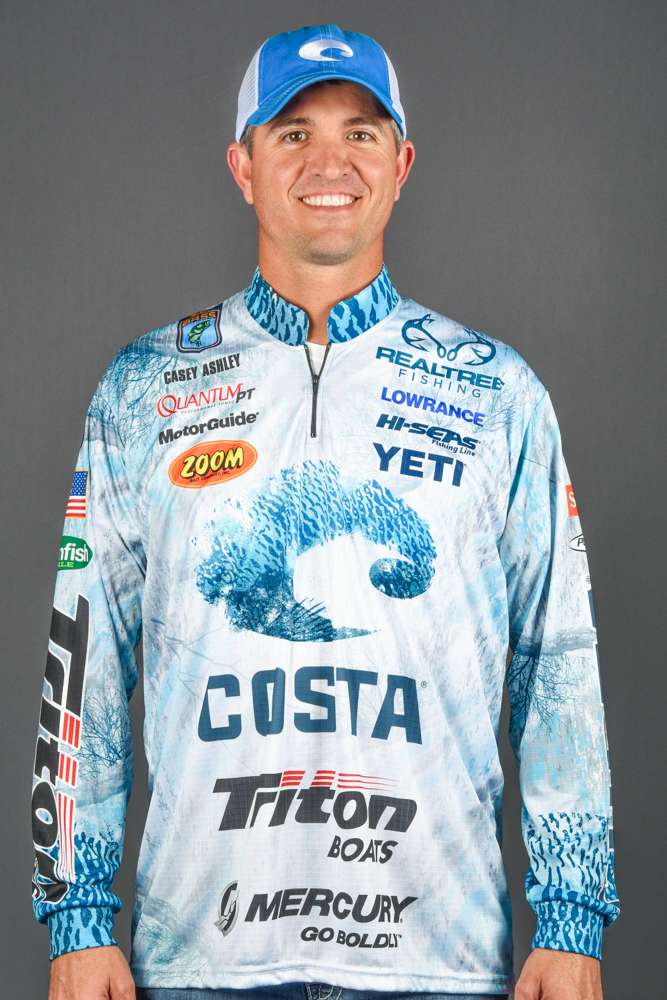
Man, this was the shot in the arm I needed. A sixth-place finish on Lake Texoma not only lifted me in the points, it boosted my confidence.
Everybody knows I started off slowly this season, and I was down in the high 50s in the points. Finishing strong on Texoma got me right at the Classic cut.
That was a pretty big move this late in the season. Of course, I would have loved to win, but a Top 10, that’s major, major in the points.
Looking back on this tournament, the high water was a big concern for a lot of people, but I didn’t know anything about the lake, so these conditions probably helped me more than anything.
During practice, the water was rising like a foot a day, so it was hard to get a bite. When you put that much water on the cover, it just scatters the fish, and it makes the bite so random.
You could get bit off a green bush, a dead bush, a willow tree. You’d go into an area and you had to flip at every piece of cover that you could see. Obviously, with that much cover, you can’t hit everything, but I tried to hit as much as I could.
This one was a mental grind. You couldn’t just ride around during practice and say, “I’m going to catch them right there.” You had to fish.
Texoma definitely made it tough on me, but now that I’ve come away with a strong finish, I’m feeling a lot better about my season.
I say it a lot, but it’s true — momentum is everything in this sport. Momentum gives you confidence and that’s a big help going into the next event.
That’s not to say that any fisherman lacks confidence. If you don’t believe in yourself, you might was well not be out here. But having a good tournament gives you momentum; it makes you feel like you can do no wrong and it helps you fish better.
The way this tournament set up was right up my alley. I love fishing shallow water and visible cover, but I was able to add a little twist that helped me catch fish that other people were missing.
When I got to Texoma, it was flooded. When there’s 8-9 feet of water on the outside bushes, you know the fish had to come to the cover. There was bait everywhere. It was almost like a shad spawn with the bait flooding the bank.
You knew the fish would be with all that bait, it was just a matter of picking out the areas that they were in. The real challenge was the fact that they were so scattered, it was harder to pinpoint what cover they’re using.
The way I broke down the lake was to look at where the fish should be in their normal cycle and then consider how they would move with the high water.
Basically, the lake was at normal pool two weeks before we got there, so in June the fish should have already been in their postspawn pattern. Knowing that, I tried to figure out where they would have the shortest distance from the offshore structure to the bank.
Main creek banks and main lake banks seemed to be the deal. And instead of concentrating on the obvious bushes that everyone could see, I relied on my Costa polarized sunglasses to help me pick out the bushes that weren’t breaking the surface.
A lot of people were not fishing these bushes. You had to ride by them to spot them.
A lot of people were fishing the big points running out with one loner bush, but I don’t like fishing behind people. That’s why I keyed on the more subtle stuff.
The whole tournament, I caught my fish by flipping two baits: a 1/2-ounce Texas-rigged Zoom Z Craw and a 1/2-ounce Strike King Slither Rig with creature bait trailer. I dipped the tail in chartreuse to give the bait more contrast in the dirty water.
This pattern served me well the first three days, but it came back to bite me on the final day because they dropped the water about a foot and a half. A lot of fish pulled out of the areas I was fishing, and I ended up with only three little fish.
Fortunately, getting off to a good start in this event and leading the first and third days gave me enough momentum to finish strong. Now, I’m going to focus on carrying this momentum forward through the rest of the season and lock up my spot in next year’s Bassmaster Classic.

